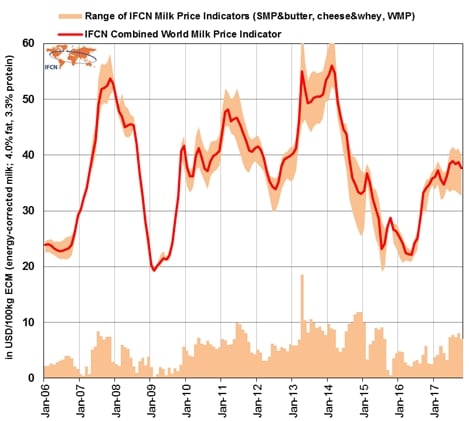This low milk supply influenced the world milk price level and now the cycle from 2013-2016 has ended.
Since 2013, costs of milk production decreased from $47.2 to $38.4/100 kg milk on average for all farms analyzed.

IFCN said its latest results shows a price recovery started in mid-2016, which indicated the end of the milk price crisis. With a clear continuation of the milk price recovery, a new ‘zig-zag scenario’ started in 2017.
According to IFCN, in 2018 a new cycle will start.
Increase in production
Dr Torsten Hemme, managing director of the IFCN, said, “After two years of crisis the milk price has recovered. But already now, we expect a new price cycle to start. Increase in production is a logical consequence and so, the price cycle will start with a downward trend.”
According to Dr Amit Saha, leading farm analysis at IFCN, the decrease in production is grounded in poor farm economics due to low world milk prices and local adverse weather events.
The data indicate high variability in farmgate milk prices from $18.1 to $95.5/100 kg ECM in 2016. The average world farmgate milk price last year was $37.7/100 kg ECM (energy corrected milk) based on 124 typical farms analyzed in 52 countries.
Milk production costs drop
On the production side, IFCN said it observed a significant and continuous reduction of average milk production costs since 2013. The average costs in 2016 were $38.4/100 kg ECM, $3/100 kg ECM below the level of 2015.

The main reasons for this are farmers’ cost-saving measures, and currency devaluation. The lowest costs (below $30/100 kg ECM) were found in selected countries in Latin America, Africa, Central/Eastern Europe and in New Zealand.
